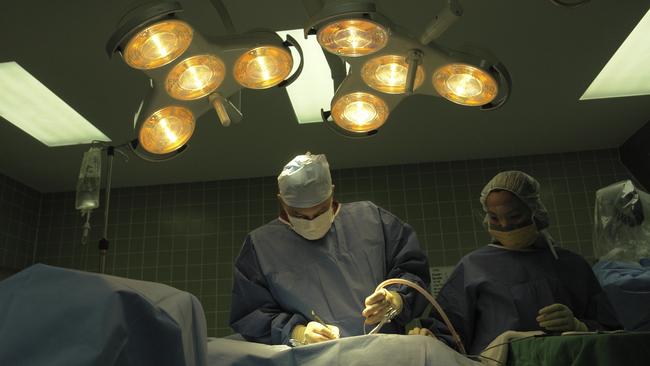Specialists resist gap fee clarity
A planned website would allow patients and GPs to compare expected expenses.

A long-promised bid to provide consumers with greater transparency over medical gap fees has had a mixed response from the specialist groups needed to support the initiative.
After taking advice from an expert committee headed by Chief Medical Officer Brendan Murphy, federal Health Minister Greg Hunt this month announced a government plan for a new fees website.
It would allow patients, and their GPs, to review and compare specialists’ fees to determine their likely out-of-pocket expenses.
“We will collaborate with clinicians and consumers to get the fee website right, with an initial focus on fees for gynaecology, obstetrics and cancer services,” Hunt said.
In its November report, the committee was “strongly of the view that full or near-full participation was essential” for the website to be successful.
However, the Royal Australian and New Zealand College of Obstetricians and Gynaecologists repeatedly has declined to state its position on the initiative.
The National Association of Specialist Obstetricians and Gynaecologists has labelled the website an election gimmick that does nothing to address the real issue of Medicare and insurance rebates.
“Rather than embarking on a doctor-bashing exercise, the government should accept that the answers to reducing out-of-pocket expenses lie within easy reach, and that is by simply having an industry fee standard that is realistic and workable,” president Stephen Lane says.
The Royal Australasian College of Physicians has given its in-principle support but also calls for more transparency over Medicare and insurance contributions.
Royal Australasian College of Surgeons president John Batten was on the committee and has urged all specialists to be involved “at least initially until we see how this works”.
However, Batten has raised the issue of underlying Medicare rebates and problems with insurance coverage, and suggests a broader debate is needed.
In its report, the committee found the drivers of out-of-pocket costs overall to be “complex and multifactorial”.
“These include a perception by a number of medical specialists regarding the adequacy and complexity of Medicare and private health insurance reimbursements,” the committee reports.
The introduction of Medicare Safety Net “also arguably had an inflationary effect on fees charges”, the committee notes.
The Department of Health has singled out obstetrics as a specialty where there has been an opportunistic fees blowout, increasing out-of-pocket costs for patients.
In recent years, more expectant mothers have opted to give birth in public hospitals rather than face high out-of-pocket expenses in the private sector. This has led to the closure of several private birthing units and contributed to the closure of some private hospitals.
The committee notes that even the website it is proposing to help patients carries the risk of some specialists increasing fees to match their peers.
Before 2014, Medicare published provider percentile charts, to allow peer comparisons. However it was found that publishing the fees led to a $169.2 million rise in billing across four years, with billing of the two most common items increasing by 5.2 per cent and 31.6 per cent.
Politically, with a federal election due to be called within weeks, there is a very clear divide on the issue of medical expenses. New data reveals the contrasting experiences, driven largely by socio-economic status: patients in Liberal-held seats are most likely to be left out of pocket after specialist and GP treatment, while those in Labor-held seats are most likely to be bulk-billed through Medicare.
The highest average out-of-pocket expenses in 2017-18 for out-of-hospital specialist attendances were in Warringah ($105.45) and Wentworth (102.66) in NSW, which at the time were held by the Liberal Party, until Malcolm Turnbull quit Wentworth and independent Kerryn Phelps picked up the seat in the ensuing by-election.
The lowest bulk-billing rates for specialist attendances were in the electorates of Ryan in Queensland (16 per cent), Curtin (16.4 per cent) and Tangney (16.8 per cent) in Western Australia, and Kooyong (17.7 per cent), Higgins (18.9 per cent) and Goldstein (19.4 per cent) in Victoria, all held by the Liberal Party.
By contrast, the five electorates with the highest bulk-billing rates for specialist attendances were all Labor-held, topped by 59 per cent in Ed Husic’s NSW seat of Chifley.
The trend also was evident in relation to GP services, with Labor holding four of the five electorates with the highest bulk-billing rates and the Liberals holding four of the five seats with the lowest rates.
Labor is still campaigning to “save” Medicare but has yet to detail its policies, while the Coalition has spent much of its time in government trying to contain Medicare spending growth and make private health insurance more attractive.
With government insurance reforms continuing, Labor has promised a two-year cap on premium increases — sparking fears of higher out-of-pocket expenses — to allow for a Productivity Commission inquiry into the sector. Labor, if elected, also would establish a permanent Australian health reform commission.


